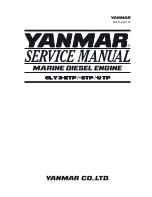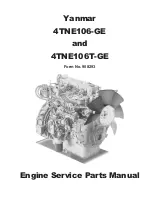
Mechanical freewheeling
Figure 19. A piston with the freewheeling
spring.
The motors can be equipped with mechanical freewheeling springs, which enable the
motor disengagement. When there is no pressure in the working lines of the motor,
the springs push the pistons down into the cylinders and hold them there. When
disengaged the motor may be used without active fluid supply from the hydraulic
system.
In systems using mechanical freewheeling, the drain line should be connected
directly to the reservoir to ensure the lowest possible case pressure.
To ensure there is no pressure differential between the work lines A and B (acting
under the pistons) and case drain line C (over the pistons), the three (3) lines are to be
connected together in freewheel mode.
The external freewheeling valve should be positioned as close to the motor as
possible to ensure smooth and rapid mode change.
USING THE FREEWHEELING
When the motor is depressurized and not rotating, the motor will disengage
automatically. The motor disengagement during motion is done with a freewheeling
valve.
The freewheeling valve can be a separate external valve, which connects the working
lines (A and B) and the case drain line (C) together. The purpose of the valve is to
remove pressure difference over the motor pistons. This allows the pistons to retract
with aid of mechanical springs.
• DISENGAGING THE MOTOR
Open the freewheeling valve and depressurize the motor with the directional
control valve to disengage the motor.
• ENGAGING THE MOTOR
Close the freewheeling valve and pressurize the motor with the directional control
valve to engage the motor.
The directional control valve and the freewheeling valve are usually activated
simultaneously.
Attention:
Any pressure in the working lines (A and B) during the freewheeling
pushes the pistons out of the freewheeling position. This causes clattering
noise when the pistons connect to the cam ring.
3.8.2
Motor Description
Product Manual
27
Содержание BB 4
Страница 1: ...Product Manual BB and BBC series ...
















































